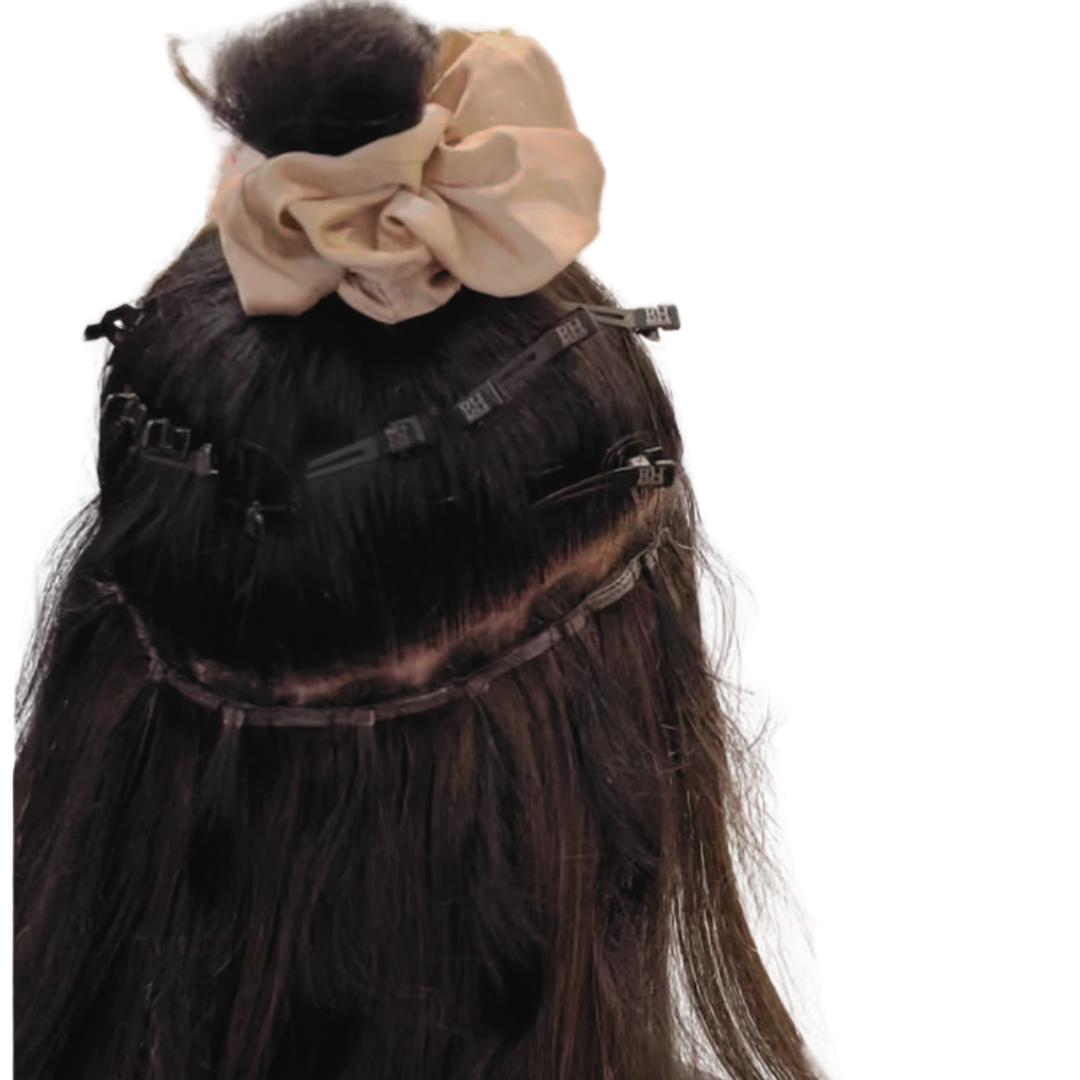A Quick Guide to permanent extensions
Hair extensions are available in so many different techniques that finding all the information you need can be very difficult and confusing.
Whether you're lusting after waist-length, beachy summer waves or just want a half decent ponytail for once in your life, hair extensions can be the instant solution to all your long hair issues.
Here are the answers to a few questions regarding hair extensions you may be asking.
What Types Of Hair Extensions Can You Get?
All extensions are either human or synthetic.
Human hair is five to seven times more expensive, but it can be colored and heat-styled. Virgin remy hair is the highest quality of human hair available. This hair has never been treated with chemicals and is left unprocessed and uncolored. The extensions are designed to fall in the most natural-looking way.
Synthetic hair, which is cheaper than human hair, retains its shape well and never frizzes, but it can look unnaturally shiny and even melt when heat-styled. (Some can withstand heat up to 350 degrees.)
We use premium Quality human hair extensions for all of our installations.
How to Choose between Different Types of Hair Extensions
With the abundance of hair extension types and techniques on the market today, it can be understandably tricky deciding what’s best for you—especially if you’ve never used extensions before. The good news is that it doesn’t have to be a difficult decision if you do some research and determine what exactly you’re looking for. Here are some of the most popular types of hair extensions:
Fusion hair extensions or Ktip Extensions: This is a classic method that’s been used for over 25 years. Small groupings of extension hair are attached to your own hair using keratin protein bonds.
Weft hair Installation or braidless sew ins: This technique uses wefts of hair that are attached with thread using your own hair as a base or silicone lined beads to attach hair. This installation can use traditional hair extension bundles, or hand tied extensions.
Tape In Extensions: Also known as tape-in extensions, wefts of extension hair are added between strands of your own hair and attached using a thin polyurethane strip with tape on one side.
Cold Fusion or Itip hair extensions: This technique uses small beads to attach extension hair strand by strand to your own hair.
Now that you know the basics of several different types of hair extensions, ask yourself the following questions, and talk to your hair stylist for additional recommendations.
Beaded Row Extensions
Questions to ask before committing to Hair Extensions
What type of hair do I have?
If your hair is damaged or over-processed, you’ll want to steer clear of the fusion technique. And if you have particularly slick hair, you might have trouble getting the beads with microlink to stay in place. Braidless sew-in, skin weft, and clip-in extensions can be used with just about any hair type.
What kind of look do I want?
If you want to lengthen thick hair, braidless sew-in may be your best bet. If you want to add slight fullness and subtle length, choose the skin weft technique, which doesn’t require a full head application. If you want to add colorful highlights for a special occasion, you’ll want to choose clip-in hair extensions, since they can be removed after the event is over.
How much do I want to spend?
Fusion is the most expensive method, but the hair extensions also last about 4 months with little maintenance, so you may find they’re a good investment. Micro-link and braidless sew-in are slightly less expensive, also last for up to 4 months, and can be re-used, which should save you money in the long run. Skin weft extensions are similarly priced, last 6-8 weeks, and can be re-used. Clip-in extensions are the most affordable option, making them a good choice if you want to try hair extensions for the first time or wear them for a one-off event.
How much maintenance am I willing to perform?
You can treat fusion and braidless sew-in extensions like your own hair, although you need to remember to keep curling and flat irons away from the bonds of fusion extensions. Microlink and skin weft extensions both require you to avoid using oily hair products near your scalp, so they need a little more work. Clip-ins are the lowest maintenance option because you can take them out whenever you want, wash them periodically, and even curl or flat iron them. However, wearing them for too long can damage your own hair, so you need to make sure you’re only using them occasionally.
It is best to book a consultation with a licensed and certified professional to see what your best options are.



